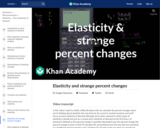
Why we calculate percent changes in a strange way when calculating elasticities. Created by Sal Khan.
- Subject:
- Economics
- Social Science
- Material Type:
- Lesson
- Provider:
- Khan Academy
- Provider Set:
- Khan Academy
- Author:
- Sal Khan
- Date Added:
- 07/27/2021

Why we calculate percent changes in a strange way when calculating elasticities. Created by Sal Khan.
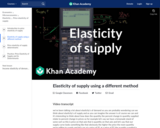
Thinking about elasticity of supply. Created by Sal Khan.

In celebration of Day of the Dead, listen to 2020 New Mexico Poet Laureate, Levi Romero, explore the meaning of remembrance in his poem “El día 29 de Agosto.” This video is one of the 2021 Dead Poets Open Mic Series created by the Smithsonian National Museum of the American Latino in collaboration with Mouthfeel Press.

A brief video by Common Craft explaining the electoral college.

This unit is designed to provide students with an introduction to the electoral processes of the American political system. Students will develop a strong foundation that will inform them of their choices and encourage civic involvement. The Elections and Voting unit guides students to a deep understanding of concepts and processes across the political spectrum through simulations, presentations, vocabulary-building activities, and a mock election.

iCivics hub of resources for teachers to review and utilize within the classroom for lessons about elections and voting. Includes lesson plans and games. Provides resources for both middle schools and high schools.
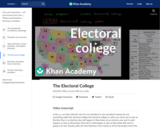
How we elect our President in the United States. Created by Sal Khan.

Go to National Archives and search for the electoral college, if the link does not work, this Text/HTML has a ton of information on the electoral college as well as historical results. You can also see the actual ballots sent in by each state as well as all electors chosen by each party within a state. LW
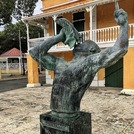
In this comprehensive lecture, Dr. George Tyson, a renowned historian and leading scholar on the history of the Virgin Islands, provides an in-depth analysis of the 1848 Emancipation Revolt in the Virgin Islands. Celebrating the 175th anniversary of this pivotal event, Dr. Tyson's talk is part of Virgin Island's History Month, focusing on the theme "Emancipation Now: Understanding History, Living the Legacy, and Creating a Just Future for All."Dr. Tyson, with his extensive background in teaching and historical preservation, emphasizes the collective action of thousands of enslaved persons achieving emancipation, challenging the traditional narrative that credits the event to a few individuals. He meticulously recounts the events leading up to and following the July 3rd uprising, highlighting the peaceful nature of the revolt compared to other emancipation movements in the Caribbean. The lecture delves into the historical context, including the influence of royal decrees and the spirit of protest among the enslaved population.Dr. Tyson argues for the importance of understanding emancipation as part of a broader democratic movement against royalism and social injustice, linking it to the American, French, and Haitian revolutions. A significant portion of the talk is dedicated to identifying key emancipation sites on St. Croix, advocating for their preservation as educational tools and historical monuments.

This course examines the choices and constraints regarding sources and uses of energy by households, firms, and governments through a number of frameworks to describe and explain behavior at various levels of aggregation. Examples include a wide range of countries, scope, settings, and analytical approaches. This course is one of many OCW Energy Courses, and it is a core subject in MIT's undergraduate Energy Studies Minor. This Institute-wide program complements the deep expertise obtained in any major with a broad understanding of the interlinked realms of science, technology, and social sciences as they relate to energy and associated environmental challenges.

This is a case about whether public schools may also play a role in teaching faith to God through the daily recitation of a government-endorsed, teacher-led prayer. This resource includes teacher materials, guides, and activities for teaching about this Supreme Court case.
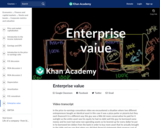
Solving the P/E conundrum by looking at a different valuation metric (enterprise value). Created by Sal Khan.

Article I Section 8 of the Constitution lists powers expressly delegated to Congress. This lesson has students learn about the concepts of enumerated and implied powers of Congress and explore real life examples of these powers. Students will use the Constitution Clips resources to summarize the specific enumerated powers and identify the additional powers of Congress implied by them. This lesson works well in classes with one-to-one devices or could be adapted to fit a flipped classroom.
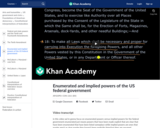
Enumerated and implied powers of the US federal government with a focus on the Commerce Clause and the Necessary and Proper Clause of the US Constitution.

Where we live in society plays a huge role in the environmental benefits and risks that we're exposed to.

What did Manifest Destiny mean to the United States? How did Native Americans and African-Americans fit into Westward Expansion? This lesson plan compares Emanuel Leutze's 1861 study of Westward the Course of Empire Takes its Way to the final mural in the United States House of Representatives. Analysis of the artwork and the changes made to the final version teach the history of Westward Expansion and Manifest Destiny.

This collection uses primary sources to explore the Equal Rights Amendment. Digital Public Library of America Primary Source Sets are designed to help students develop their critical thinking skills and draw diverse material from libraries, archives, and museums across the United States. Each set includes an overview, ten to fifteen primary sources, links to related resources, and a teaching guide. These sets were created and reviewed by the teachers on the DPLA's Education Advisory Committee.
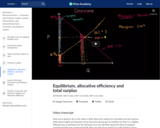
Total surplus is maximized in a market at equilibrium. In this video, we talk about why this is and the math behind this assertion.
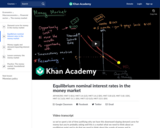
How are nominal real interest rates determined? In the money market! Learn about the money market in this video.
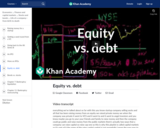
Debt vs. Equity. Market Capitalization, Asset Value, and Enterprise Value. Created by Sal Khan.